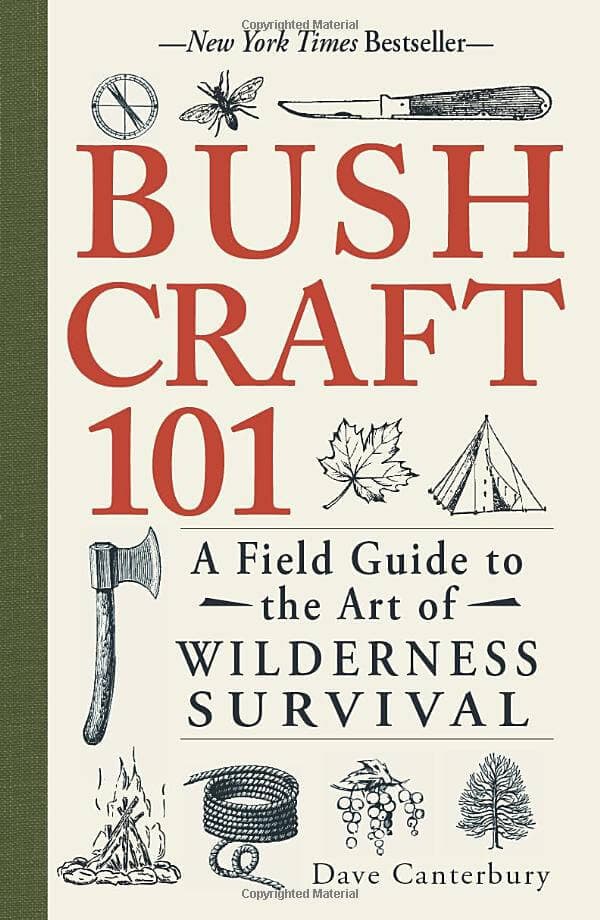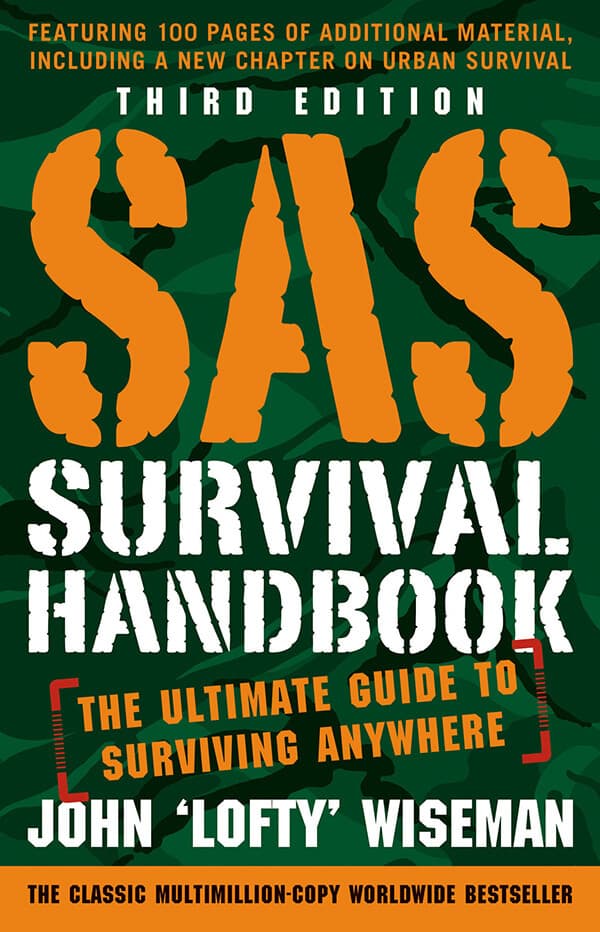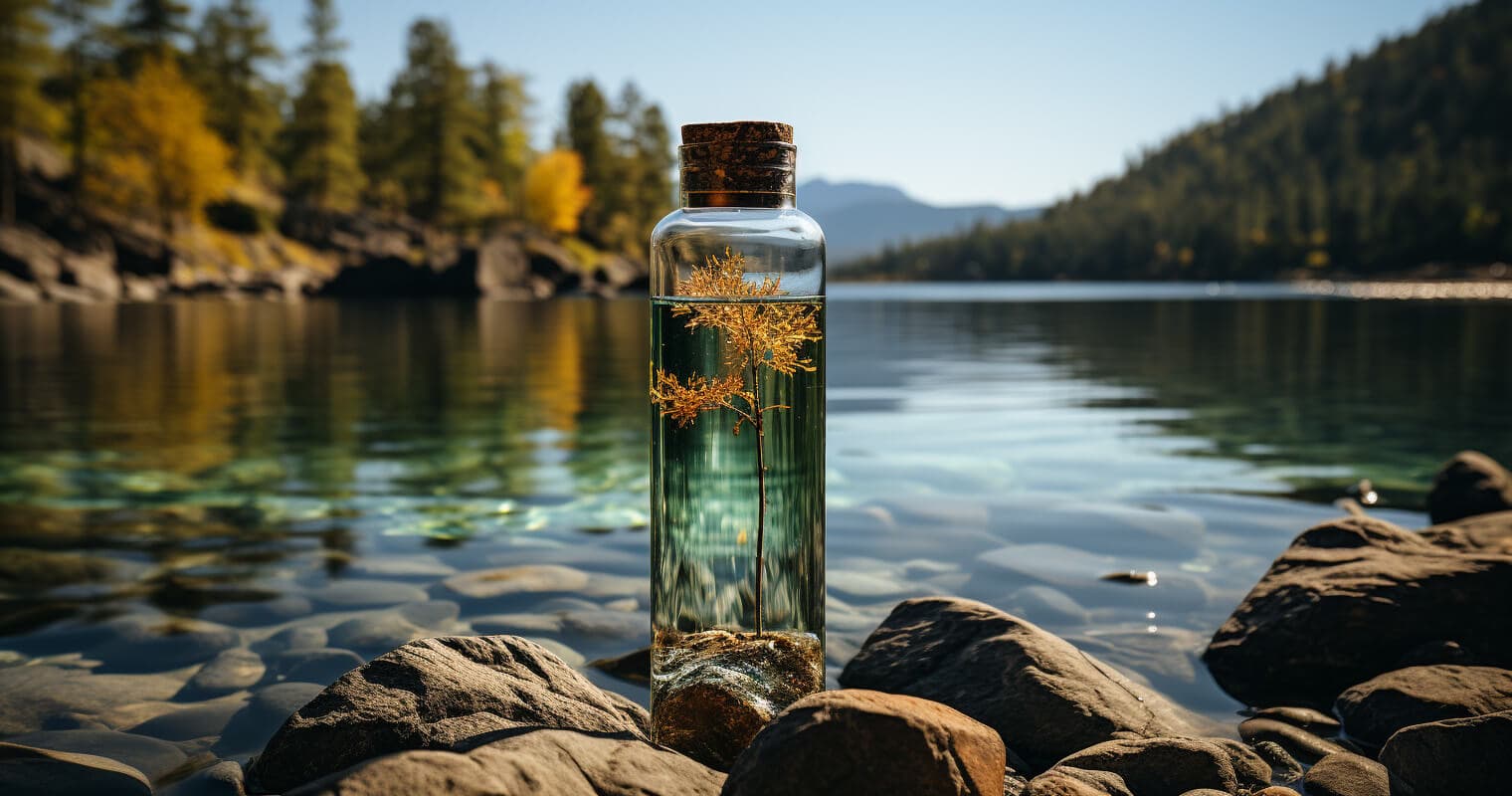Survival Skills 101: Basics Every Hiker and Backpacker Should Know

Embarking on a hiking or backpacking adventure is not only about enjoying the breathtaking vistas and the serenity of nature; it’s also about embracing the unexpected. The wilderness can be unpredictable, with unforeseen circumstances that could turn your enjoyable outdoor escape into a test of survival. This is why every hiker and backpacker should be well-versed in basic survival skills.
Understanding survival skills is not merely about preparing for worst-case scenarios; it’s also about enhancing your connection with the natural environment and boosting your confidence when exploring it. Survival skills are the backbone of a safe, fulfilling, and responsible outdoor experience.
This article aims to provide a comprehensive guide to the fundamental survival skills that every hiker and backpacker should master. We’ll dive deep into aspects like building a shelter, starting a fire, finding and purifying water, recognizing edible plants and insects, signaling for help, administering first aid, and navigating unfamiliar terrains.
Whether you’re a novice hiker or a seasoned backpacker, there’s always more to learn when it comes to surviving and thriving in the great outdoors. Let’s start our journey to become more resourceful, prepared, and resilient explorers.
Table of Contents
- Survival Principle: The Rule of 3
- Building a Survival Shelter
- Fire-Making Skills
- Finding and Purifying Water
- Identifying Edible Plants and Insects
- Signaling for Help
- Basic First Aid Skills
- Navigation Basics
- The Mindset of Survival
- Wrapping Up
- Further Learning: Expanding Your Survival Skill Set
Survival Principle: The Rule of 3
In survival scenarios, the “Rule of 3” is a crucial principle that can serve as a guideline for prioritizing actions. According to this rule, in harsh conditions, one can survive roughly:
- 3 minutes without air or in icy water,
- 3 hours without shelter in extreme weather,
- 3 days without water, and
- 3 weeks without food.
It’s important to note that these numbers aren’t exact, but they offer a broad sense of which survival necessities demand immediate attention.
Air: Thankfully, the lack of breathable air isn’t typically a concern while hiking or backpacking unless you’re dealing with a choking incident, a severe allergic reaction, or high-altitude hiking. Nevertheless, learning basic lifesaving techniques such as the Heimlich maneuver and recognizing the signs of altitude sickness can be very beneficial.
Shelter: In extreme weather conditions, hypothermia or heatstroke can strike in a matter of hours. Understanding how to build a temporary shelter to protect yourself from the elements using natural resources, or using items you have in your pack, is a crucial skill.
Water: Dehydration can quickly become a threat, particularly in hot or arid environments. Knowing how to locate, collect, and purify water sources is critical for wilderness survival.
Food: While important, food is less of an immediate concern than shelter and water in most survival situations. Nonetheless, being able to identify edible plants and insects can be an invaluable skill when lost or stranded for extended periods.
The “Rule of 3” serves as a reminder of our biological needs in extreme circumstances, helping us prioritize tasks in survival situations. In the following sections, we will delve into each of these aspects in detail to equip you with the knowledge and skills needed for effective survival planning.
Building a Survival Shelter
In a survival situation, a shelter can make all the difference. It can protect you from the elements, help maintain body heat, and provide a space for rest and recovery. Building a survival shelter, however, requires knowledge and skills. Here’s a brief guide:
Choosing the Right Location: The location of your shelter is crucial. It should be on relatively high ground to avoid water runoff, but also near resources like water, food, and materials for building and fire.
Basic Shelter Types: There are several types of shelters you can build, depending on your situation and resources. A simple lean-to made from branches and leaves can provide adequate protection in many situations. If you have more time and resources, a debris hut or a snow cave can offer better insulation.
Insulation and Waterproofing: Once you have the basic structure, it’s important to insulate and waterproof your shelter. Leaves, moss, and grasses make good insulation material. If available, use larger leaves or bark to add a waterproof layer.
Safe Shelter Practices: Ensure your shelter is sturdy and safe. Avoid building your shelter under dead trees or loose branches that may fall and cause injury. Also, if you have a fire, make sure it’s a safe distance from your shelter to prevent accidental fires.
Having these basic shelter-building skills can significantly increase your chances of survival in case you get lost or stuck in the wilderness. Remember, the key is to keep your shelter simple and functional, and always prioritize safety.
Fire-Making Skills
Fire serves many purposes in a survival situation - it provides warmth, allows you to cook food and purify water, keeps wild animals at bay, and can be used as a signal for help. Thus, understanding how to build and sustain a fire is a vital survival skill.
Understanding Fire Basics: A fire needs three elements: heat, fuel, and oxygen. Heat is the spark that starts the fire, fuel (such as wood or dry leaves) keeps it going, and oxygen feeds it. Understanding this fire triangle is the first step towards making a fire successfully.
Selecting the Right Materials: Look for dry, dead materials as they catch fire easily. You’ll need tinder (small materials like dry grass or moss that catch fire easily), kindling (small sticks and twigs), and fuel (larger pieces of wood that will sustain your fire).
Creating the Fire: Start with a small pile of tinder. Use a spark to ignite the tinder, and gently blow to help the fire grow. Once the tinder is ablaze, gradually add kindling, and eventually, larger pieces of wood. Remember to leave space between the pieces of wood for oxygen to circulate.
Keeping the Fire Going: Don’t let your fire burn out. Regularly add more wood, being careful not to smother the flames. Protect your fire from wind and rain as best you can.
Fire Safety: Always adhere to safety practices when dealing with fire. Keep it away from your shelter and other flammable materials. Ensure you fully extinguish the fire when you’re done.
Keep in mind that fire-making can take practice, so try these techniques on your regular hikes before you actually need to rely on them for survival.
Finding and Purifying Water
Water is crucial for survival, but in the wilderness, it’s often not safe to drink directly from natural sources due to potential contamination. In this section, we will discuss how to find water and methods for making it safe to consume.
Locating Water Sources: Signs of water include lush green vegetation, areas where animal tracks converge, and the sound of running water. Water can also be found by digging a hole in a dry riverbed or at the base of hills and valleys.
Collecting Water: Depending on the source, you might be able to collect water directly or you may need to create a water-catching system. For example, you can collect rainwater, dew, or use a tarp to create a condensation trap.
Purifying Water: Purifying water is crucial to remove harmful bacteria, parasites, and other contaminants.
Boiling: This is the simplest and most reliable method. Bring water to a rolling boil for at least one minute. If you’re at altitudes above 2,000 meters, boil for at least three minutes.
Water filters and purifiers: Portable filters can remove bacteria and protozoa. Purifiers can also remove viruses. Follow the manufacturer’s instructions.
Chemical treatments: Tablets or liquid drops, such as iodine or chlorine dioxide, can be used. Be aware that these don’t kill all parasites and may leave an aftertaste.
UV light: Handheld ultraviolet light devices can kill bacteria, viruses, and protozoa. They are effective but require batteries and can be pricey.
Staying Hydrated: Remember, staying hydrated is critical. Even if you’re unable to fully purify the water, it’s generally better to risk possible illness from contaminated water than to become dehydrated, especially in a survival situation.
Remember, finding and purifying water takes time and energy, so always carry enough water for your trip, plus a little extra in case of emergencies or simply bring a water filtration system if there is an abundance of water sources.
Identifying Edible Plants and Insects
In a survival situation, finding food is a necessity, and the wilderness is full of potential nourishment. However, not all plants and insects are safe to eat. This section provides basic guidance on how to identify edible flora and fauna in the wild.
Edible Plants: The wilderness is rich with a variety of plants that can provide sustenance. Here are some general guidelines:
Universal Edibility Test: If you’re unsure whether a plant is edible, use the Universal Edibility Test. This involves several stages, including smelling the plant, conducting a skin reaction test, and tasting the plant in small amounts.
Know Your Plants: Some commonly edible plants include cattails, dandelions, and berries like blackberries and raspberries. However, some berries, such as those from the nightshade family, are toxic. Always make sure you are 100% certain of a plant’s identity before consuming it.
Edible Insects: Bugs might not be your first choice for a meal, but they are high in protein and relatively easy to catch.
Safe Insects: Generally, insects that are brightly colored or have a strong smell should be avoided. Safe options include crickets, grasshoppers, and most ants. As a rule, cook all insects before eating to kill any potential parasites.
Cooking Insects: You can cook insects by boiling, frying, or roasting them over a fire. This not only makes them safer to eat but also more palatable.
It’s important to remember that while these skills can help in a survival situation, they are not substitutes for packing enough food and water for your trip. Always go prepared, and use these skills as last resorts.
Signaling for Help
When all else fails, being able to effectively signal for help can mean the difference between life and death in a survival situation. Here’s how you can attract attention to your location when you’re lost in the wild:
Using Fire and Smoke: A fire can be seen from a great distance at night, and during the day, the smoke can catch attention. To create smoke, you can add green leaves or branches to your fire. Remember, three fires or smoke signals in a row are universally recognized as a distress signal.
Creating a Signal Mirror: If you have a shiny object like a mirror, a foil blanket, or even a water bottle, you can use it as a signal mirror to reflect sunlight. Aim the reflection at airplanes or distant rescuers.
Using Sound: Sound can also carry over long distances, especially in the stillness of the wilderness. Whistle blasts, banging pots, or even yelling can attract attention. Like with fires, three distinct signals are understood as a call for help.
Ground-to-Air Signals: If you’re in an open area, creating large signals on the ground can catch the attention of planes or helicopters. This can be done using rocks, logs, or dug trenches.
Flares and Strobes: If you packed them, flares and strobes are excellent tools for signaling rescuers, especially at night.
Remember, getting noticed is key. Your goal is to make it as easy as possible for rescuers to locate you. Ensure your signals contrast with the environment for maximum visibility.
Basic First Aid Skills
Knowing basic first aid is a vital skill for anyone venturing into the wilderness. It could make all the difference when medical help is hours or even days away. Here are some basic first aid skills every hiker and backpacker should know:
Wound Management: Cleaning and dressing a wound is essential to prevent infection. You should always carry a first aid kit with bandages, antiseptic wipes, and antibiotic ointment.
Recognizing and Treating Hypothermia: Hypothermia can be a silent killer in the wild. Recognizing its symptoms (like excessive shivering, fatigue, confusion) and knowing how to treat it (like warming the person gradually, providing warm fluids, dry clothing) could save a life.
Heat-Related Illnesses: Learn how to recognize and treat heat exhaustion and heat stroke. Rest, finding shade, hydration, and cooling the body are key in these situations.
Snake and Spider Bites: Learn to identify venomous snakes and spiders in the areas you will be hiking or backpacking. Understand the procedures for dealing with bites, including when to try to treat yourself and when to seek immediate help.
Fractures and Sprains: Knowing how to immobilize a fracture or sprain using a splint could prevent further injury and provide relief from pain.
CPR and Rescue Breathing: While this requires training, knowing how to perform CPR or rescue breathing can save a life in an emergency situation.
Every hiker and backpacker should consider taking a wilderness first aid course. This formal training will provide you with more comprehensive knowledge and practical skills that can be invaluable in an emergency situation.
Navigation Basics
Being able to navigate is a vital survival skill when you’re hiking or backpacking in the wilderness. Here are the basics you need to know:
Map Reading: Understanding how to read a topographic map is crucial. It gives you the lay of the land, helps you plan your route, and allows you to keep track of your progress.
Compass Use: A compass is an invaluable tool when you’re in the wilderness. It can help you find your way when the landmarks aren’t clear or you lose your bearings. Learn how to use a compass alongside a map to navigate effectively.
Identifying Landmarks: Learn how to identify and use natural and man-made landmarks to help keep your bearings and navigate.
GPS Technology: Modern GPS devices and smartphone apps can be extremely helpful. However, remember that technology can fail, run out of battery, or lose signal. It’s important to not solely rely on them and to have traditional map and compass skills as a backup.
Star Navigation: In a pinch, you can use the stars to navigate. The North Star (Polaris) can help you identify which way is north in the Northern Hemisphere.
Trail Markings: Understand common trail markings or blazes. They can guide you along trails and warn you of potential dangers.
Keep in mind that proper navigation starts before you even set foot on the trail. Always plan your route ahead of time, familiarize yourself with major landmarks, and make sure someone else knows your plans. In addition, regularly check your map and surroundings to stay oriented, even if you’re on a well-marked trail.
The Mindset of Survival
A strong mindset is perhaps the most crucial element of survival. It often makes the difference between life and death in extreme situations. Here are some key aspects of the survival mindset:
Stay Calm: In a survival situation, panic is your greatest enemy. It can cause you to make rash decisions, waste energy, and lose hope. Take deep breaths, slow down, and make every decision deliberately.
Stay Positive: A positive mindset can help you stay focused and motivated. It can also help reduce stress and boost your mental resilience. Remember, the situation is only temporary, and with the right knowledge and skills, you can make it through.
Be Adaptable: Nature is unpredictable, and survival situations often require improvisation and adaptability. Learn to use what’s around you and adapt to changing circumstances.
Stay Active: Activity keeps you warm, produces valuable results, and gives you a sense of control over the situation, helping to fend off panic.
Never Give Up: Survival often comes down to sheer willpower. No matter how grim the situation seems, never lose sight of your goal: to survive and return to your loved ones. Remember why you want to survive and let that motivate you to keep going.
Developing this survival mindset takes practice. The more time you spend in the outdoors, pushing your limits, learning new skills, and dealing with challenges, the stronger your survival mindset will become.
Wrapping Up
Survival situations, while rare, are a reality for those who venture into the wilderness. As hikers and backpackers, it’s our responsibility to equip ourselves with basic survival skills that can potentially save our lives, or the lives of others. From understanding the crucial rule of 3, constructing an effective shelter, starting a fire, sourcing water, to identifying edible plants and insects, signaling for help, and applying first-aid, each skill plays a significant role in a survival situation.
Perhaps more critical than any single skill is the mindset of survival. A calm, positive, adaptable mind that refuses to give up can often compensate for a lack of physical resources.
This guide is just the starting point. Consider enrolling in certified survival and first aid courses, reading more detailed survival guides, and practicing these skills regularly to build your confidence and competence.
In the end, remember the age-old saying, “The more you know, the less you carry.” By equipping yourself with knowledge and practice, you can make your journeys into the great outdoors safer and more enjoyable. Here’s to your next adventure—prepared, safe, and inspired!
Further Learning: Expanding Your Survival Skill Set
To keep developing your survival skills, consider the following resources. These provide additional insight into survival techniques and offer opportunities for hands-on learning.
Wilderness First Aid and CPR courses: These certified courses offer in-depth training on first aid techniques specifically tailored for wilderness scenarios. They often include practical, hands-on sessions to ensure you can confidently apply what you learn.
Survival books and manuals: Books like “Bushcraft 101: A Field Guide to the Art of Wilderness Survival” by Dave Canterbury, or “SAS Survival Handbook” by John ‘Lofty’ Wiseman, provide comprehensive guides to survival skills, from shelter building to food sourcing.

Bushcraft 101: A Field Guide to the Art of Wilderness Survival
New York Times Bestseller
4.7 out of 5
Based on the 5Cs of Survivability--cutting tools, covering, combustion devices, containers, and cordages--this valuable guide offers only the most important survival skills to help you craft resources from your surroundings.

SAS Survival Handbook, The Ultimate Guide to Surviving Anywhere
Third Edition
4.7 out of 5
From basic campcraft and navigation to fear management and strategies for coping with any type of disaster. Revised to reflect the latest in survival knowledge and technology, and covering new topics such as urban survival and terrorism.
Online courses and tutorials: Websites like Coursera, Udemy, or even YouTube host a plethora of survival skills courses and tutorials. Whether you want a structured course or quick how-to videos, you can find them online.
Local outdoor survival skills workshops: Check for local outdoor or adventure groups in your area. They often conduct survival skills workshops or bushcraft classes.
Survivalist forums and blogs: Online platforms like SurvivalistBoards, BushcraftUSA, or blogs like TheSurvivalistBlog offer a wealth of information and tips shared by experienced survivalists.
Wilderness survival apps: Apps like SAS Survival Guide, Army Survival Guide, or Bear Grylls Survival Academy offer portable, easy-to-access survival tips, tutorials, and more.
Remember, no amount of reading or watching tutorials can replace hands-on practice. Take your time, start with the basics, and gradually build your skill set, practicing as much as possible in a safe and controlled environment. Stay safe and happy learning!
When you buy something using the retail links in our articles, we may earn a small commission. We do not accept money for editorial gear reviews. Read more about our policy.
- Category:


